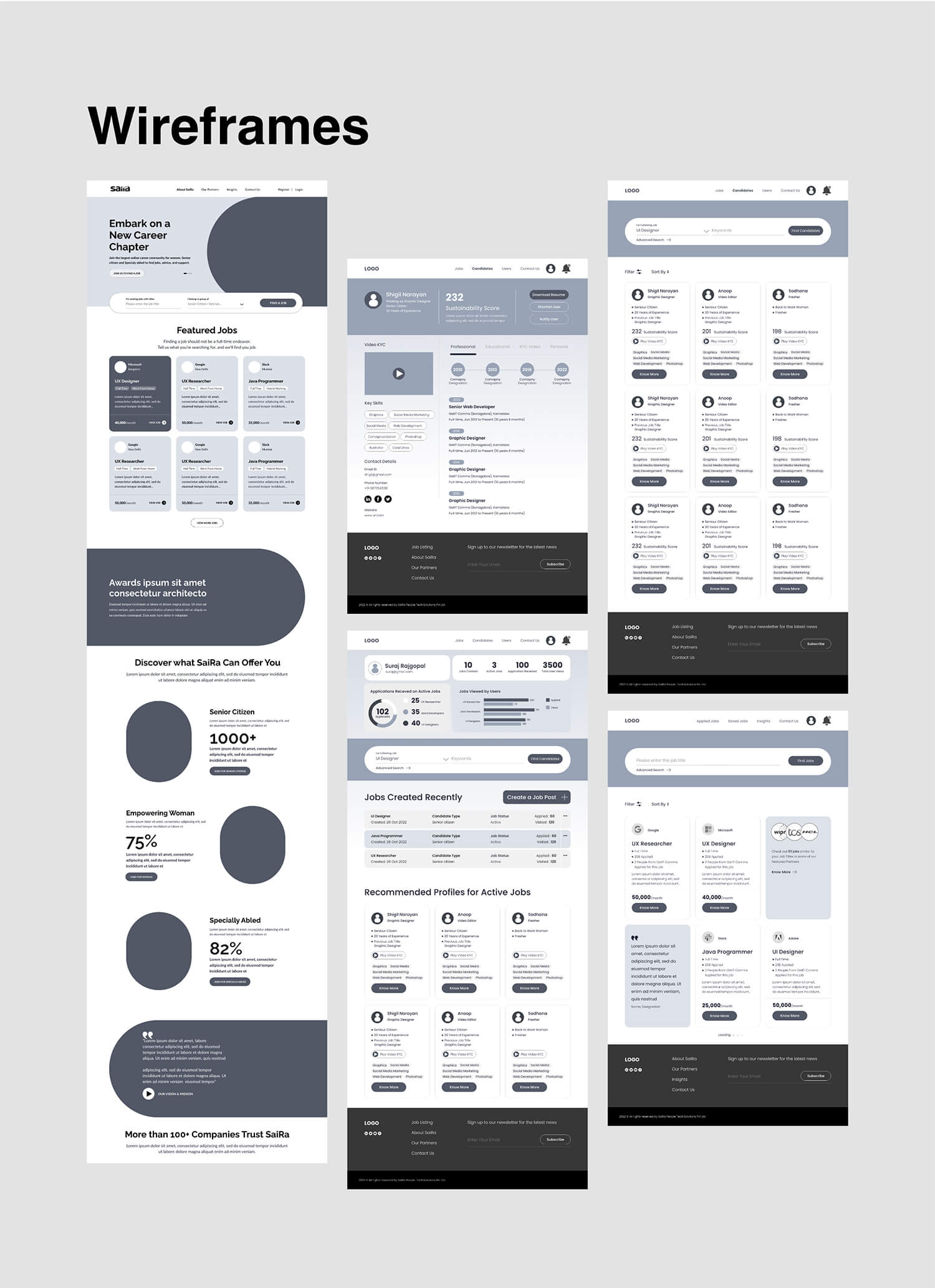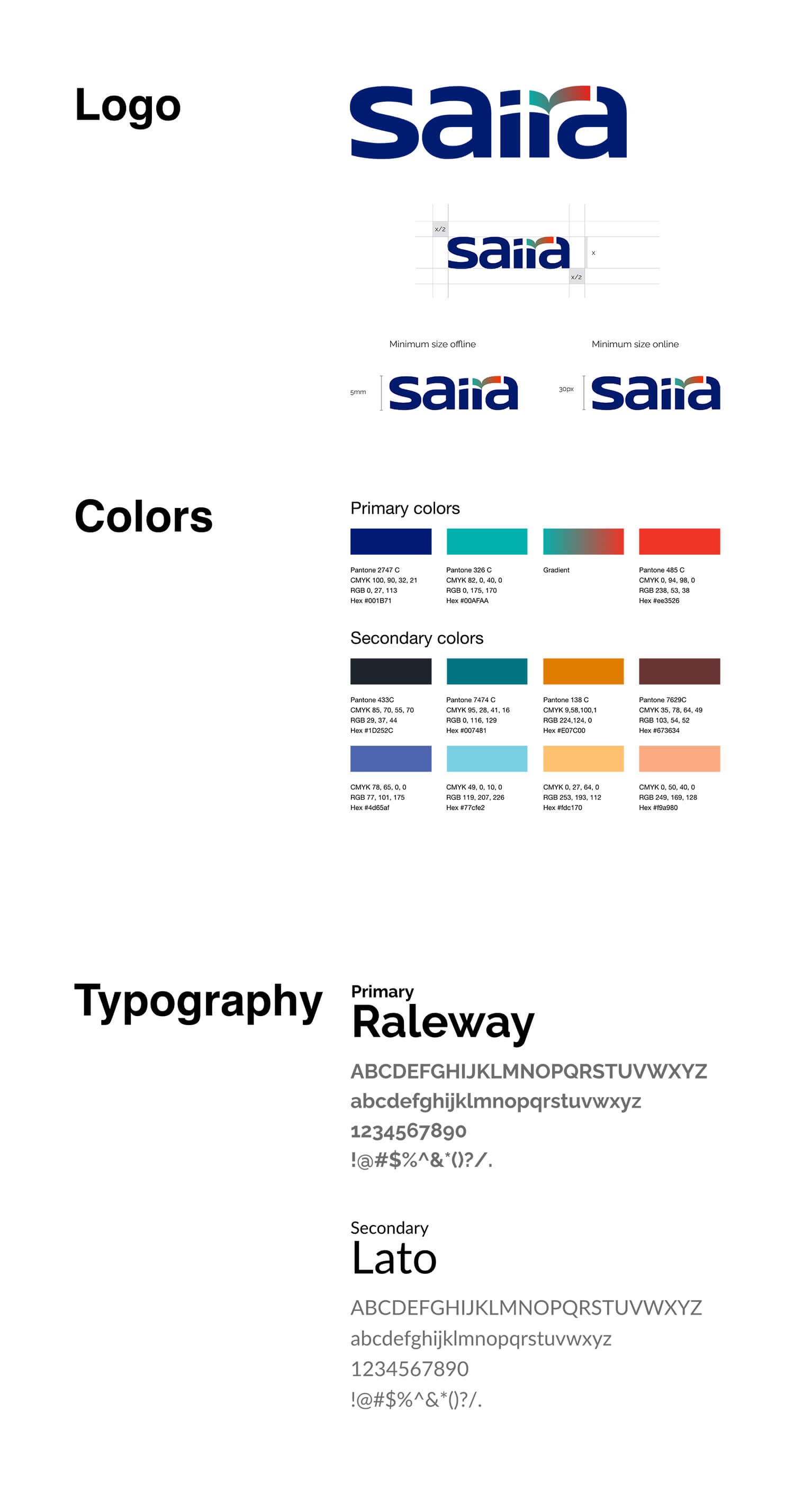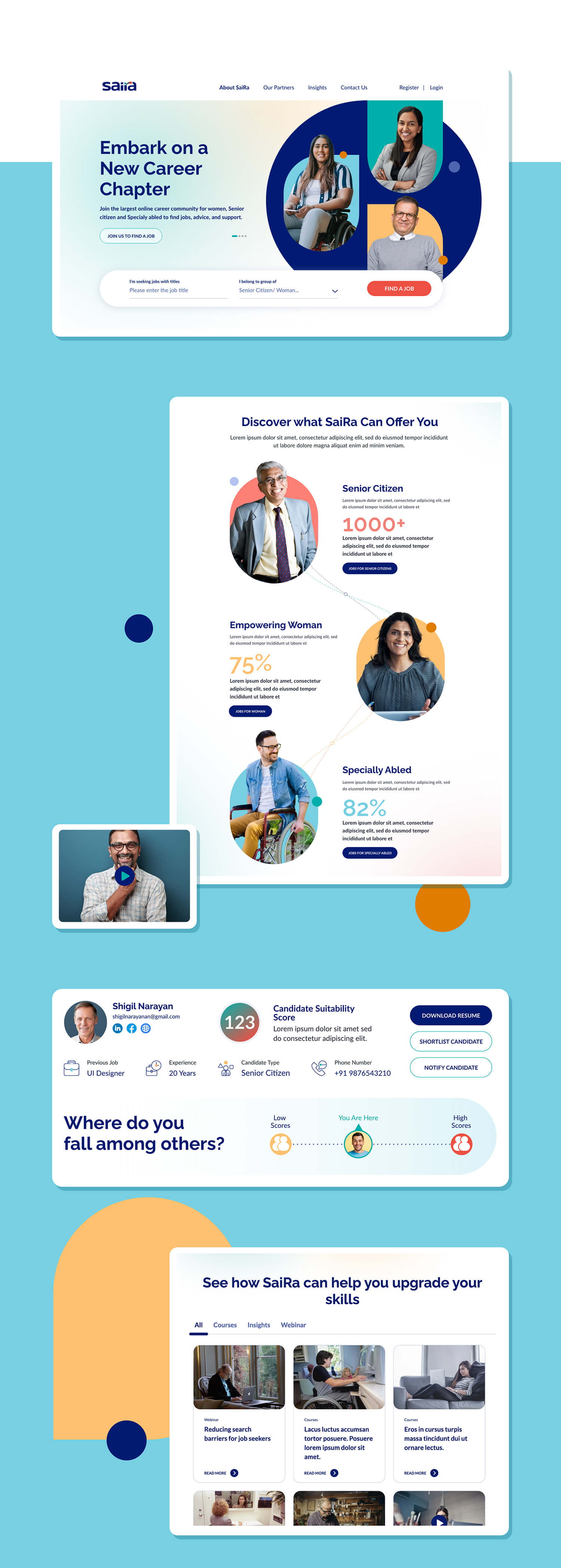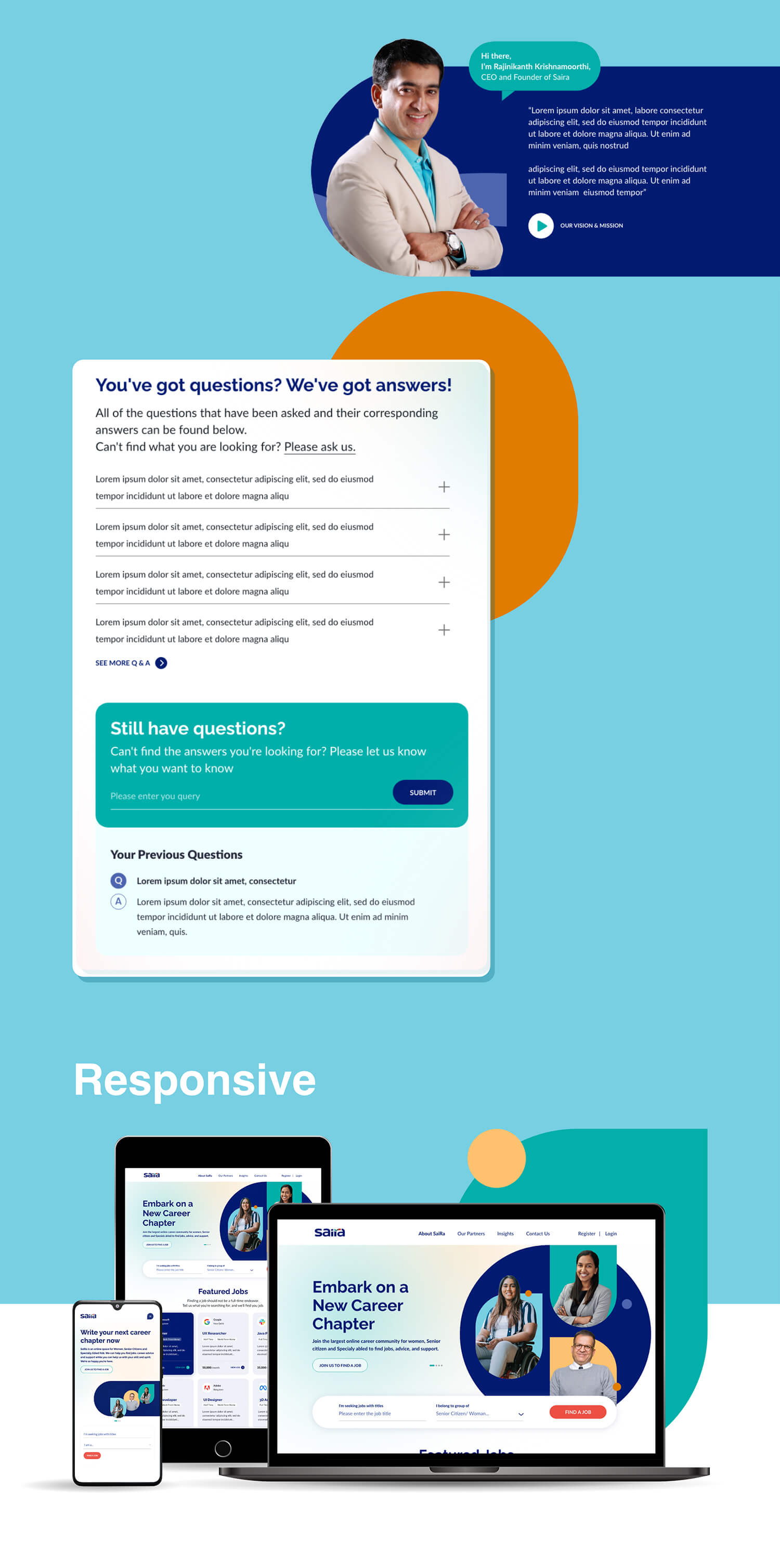
What’s among the greatest untapped—and wasted—resources available to every society?
It’s an interesting question, one that sent the leaders at Saira down a multi-year discovery project, which ended up as an opportunity to make the world a better place.
Indian organisations, Saira noticed, faced two hard problems. First, they were not able to be as inclusive as they aspired to be. Two, they had a tough time finding experienced, knowledgeable employees who could add real value to their businesses.
Saira also observed that there was a large and deep pool of untapped talent hiding in plain sight: Senior, retired workers; mothers who wanted to return to the workforce; and the specially-abled who weren’t getting a chance they deserved.
From those observations was born an idea: Saira. Its leaders realised that this two-sided problem could be fixed with a two-sided platform, one that created a win-win for both employers and job seekers.
They also realized that few others had tried to solve this problem, leaving a gap in the market that they could address.
But now it was time to move fast.
While Saira had great product-market fit, it also had to overcome two critical challenges: Limited digital literacy, and low confidence. Execution challenges, that if not tackled upfront, could undermine its entire proposition.
These two characteristics defined its job-seekers. Retirees had a lot of domain knowledge but had grown at the start of the digital era, which made them uncomfortable with non-intuitive digital interfaces.
That was not a problem that mothers returning to work had or the specially-abled. But all three cohorts showed low levels of confidence because they had not been part of the mainstream workforce for considerable periods of time.
If Saira was to succeed it could not take the path laid out by most job platforms, which were built for digital-natives who knew how to navigate obscure hiring processes and complex digital experiences.
That is when Saira turned to Helveticans. Their ask was to re-invent, from ground up, the entire job-seeking experience and create a platform that would engage employers, job-seekers, and administrators from Saira.
The scope spanned from building the Saira brand—along with its visual language and its tone of voice—to creating a Web-based user interface and user experience (UI/UX) that worked for all stakeholders. And then architecting a secure, fast platform built on cutting-edge technology and security best-practices (One of a job-platform’s most valuable assets is its database and securing it from cyberattacks was imperative.)
The Helveticans team started out by getting a deep understanding of every stakeholder. This included not only the unique mental make-up, digital literacy, and abilities of job-seekers, but also the expectations of employers (the ability to search for specific skills easily, for example), and the technology limitations of Saira’s lean IT team.
User journeys were crafted for each stakeholder, meticulously studying every interaction across the discovery, use and post-hiring stages. Additional modules for analytics and upskilling, among others, were added to the minimum viable product plan.
Every aspect of the platform, from the choice words, colours and visual elements to how the interface was designed was pored over to ensure the best possible experience for different users.
For example, the team decided to use a milestone timeline interface to show job-seekers where they were located on the long road from searching for opportunities, applying for a job, receiving a response, and so forth. This decision was based on the fact that the audience was accustomed to the delivery timelines used by ecommerce sites or food delivery apps. The idea introduced transparency and helped to calm nervous job seekers.
Another example was the use of “suitability scores.” A problem with most job platforms is the static nature of a job-seeker’s profile: Once a CV has been uploaded, that profile is not updated. Not so on Saira. Every time a jobseeker participated in an upskilling program on the platform—to improve their ability to present themselves, for example—their suitability score increased. By constantly engaging and tracking the progress of job-seekers, the platform sought to create an environment of care, something research had shown that job-seekers were looking for.
This emphasis on creating best-in-class experiences extended to the technology stack. For example, Helveticans’ developers chose React to build UI components because it improves front-end performance, providing users with faster page load times, smoother interactions, and greater interactivity such as search suggestions. Additionally, React's component-based architecture allows developers to create consistency across the site, a key ingredient of good user experience.
For the benefit of Saira’s technical team, developers decided to use WordPress as a CMS, eliminating the need for a learning curve, and making it easier for Saira’s lean IT team to maintain the website.
They also took a development approach that hid the tools the website used from the public, making it more difficult for copy-cat platforms to replicate Saira. Also, to improve the security and scalability of the site, developers selected a micro-services architecture that split the front-end into four services and ensured that each has separate back-end services. They also ensured that the site’s database was isolated from these services to strengthen security.










